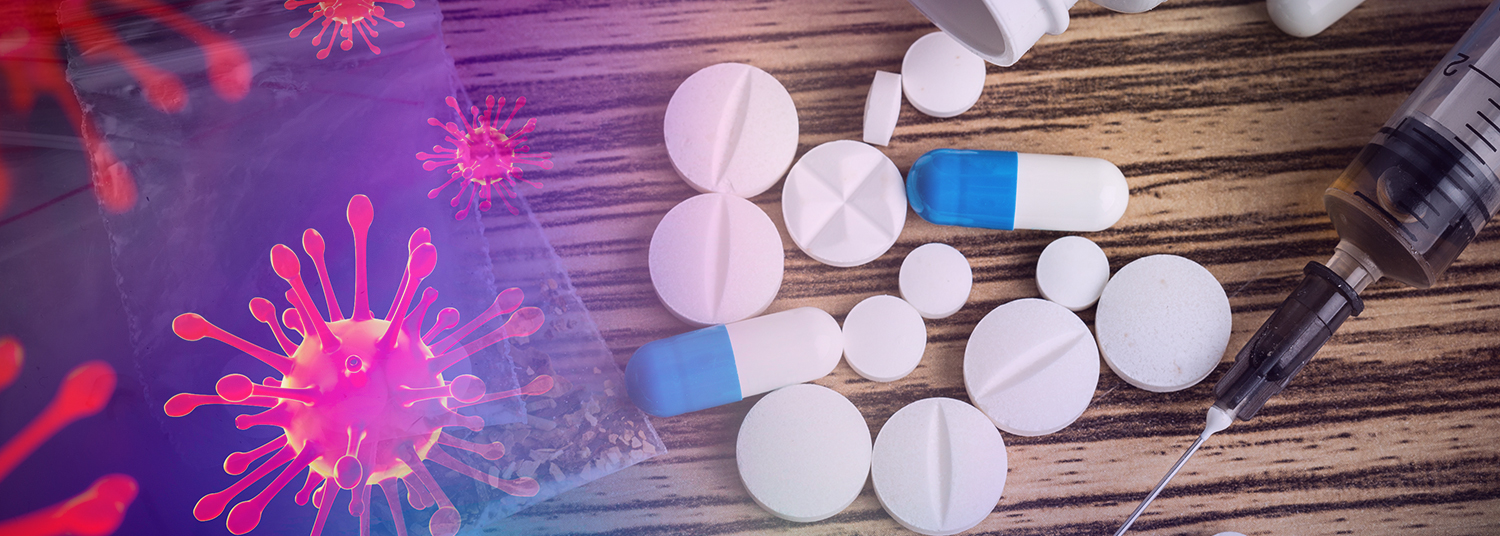October 01, 2020
The UMSOM Health and Recovery Practice Offers Comprehensive Services for Those Suffering from Addiction Disorders
Addiction disorder experts at the University of Maryland School of Medicine’s (UMSOM) Health and Recovery Practice (HARP) have adapted and expanded their services for those especially vulnerable during the COVID-19 pandemic, providing comprehensive care and other social rehabilitative services.
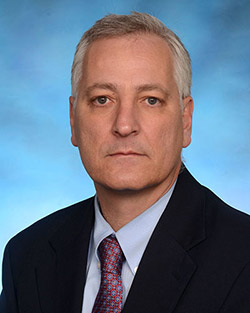 The University of Maryland Drug Treatment Center, located at 1001 West Pratt Street in Baltimore City, was the first hospital-based Medication-Assisted Treatment (MAT) program in the state of Maryland, treating as many as 700 patients with psychosocial interventions and medications. To help those in need during COVID-19, the center has expanded to offer a range of services for patients who also typically suffer from co-existing illnesses. The HARP program’s use of telemedicine treatment of opioid dependence has also been critical during the pandemic, helping to reduce spread of the virus.
The University of Maryland Drug Treatment Center, located at 1001 West Pratt Street in Baltimore City, was the first hospital-based Medication-Assisted Treatment (MAT) program in the state of Maryland, treating as many as 700 patients with psychosocial interventions and medications. To help those in need during COVID-19, the center has expanded to offer a range of services for patients who also typically suffer from co-existing illnesses. The HARP program’s use of telemedicine treatment of opioid dependence has also been critical during the pandemic, helping to reduce spread of the virus.
“Patients being treated in our HARP facility are particularly more vulnerable, especially as some social services offered elsewhere have been limited during the COVID-19 pandemic,” said Anthony Amoroso, MD, Associate Professor of Medicine, Associate Chief of Infectious Diseases and Chief of Clinical Care Programs for the Institute of Human Virology (IHV).
The HARP facility has expanded services by offering WIFI services outside of the building, computer access, and added housing services.
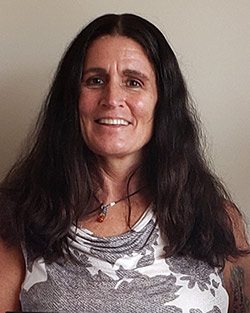 The comprehensive HARP program has been made possible through the generosity of Laurie Lundy, a donor passionate about supporting individuals suffering from addiction. “Watching the growth of the HARP facility and witnessing the enthusiasm of the doctors has been so rewarding for me,” said Ms. Lundy. “Providing primary healthcare to people receiving help for substance abuse is a service that is seriously lacking. As I have personally witnessed, people battling addiction do not receive proper attention from the medical community because of the huge stigma attached to addiction,” she said.
The comprehensive HARP program has been made possible through the generosity of Laurie Lundy, a donor passionate about supporting individuals suffering from addiction. “Watching the growth of the HARP facility and witnessing the enthusiasm of the doctors has been so rewarding for me,” said Ms. Lundy. “Providing primary healthcare to people receiving help for substance abuse is a service that is seriously lacking. As I have personally witnessed, people battling addiction do not receive proper attention from the medical community because of the huge stigma attached to addiction,” she said.
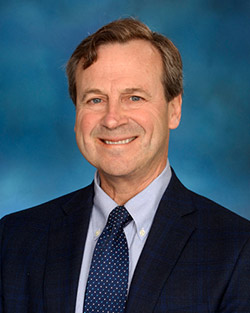 In addition to telemedicine and in-person MAT, the HARP program offers same-day access to primary care with an open clinic for on-demand medical needs. The program focuses on frequent medical evaluation and nurse practitioner management to coordinate care and maintain a treatment plan. Experts recognized that during the COVID-19 pandemic, increased contact with patients was even more critical.
In addition to telemedicine and in-person MAT, the HARP program offers same-day access to primary care with an open clinic for on-demand medical needs. The program focuses on frequent medical evaluation and nurse practitioner management to coordinate care and maintain a treatment plan. Experts recognized that during the COVID-19 pandemic, increased contact with patients was even more critical.
The program treats a wide variety of patients with medications, including methadone, buprenorphine, and naltrexone. The current patient census is approximately 700, with about 300 patients treated on a daily basis. “The benefit of an integrated medical care program in a very large addiction treatment center was so obvious, and we were very eager to get started. Without Ms. Lundy, we would never have been able to start the program,” said Dr. Amoroso, adding that they hope to integrate comprehensive vocational services, computer literacy and GED classes, parenting education, exercise and nutrition classes, and yoga, in the future.
A key aspect of the program focuses on reducing hospital and emergency room admissions. The HARP program achieves this goal by offering acute care services to treat patients following their discharge from the hospital. “We have made significant progress and continue to expand the services we offer to vulnerable patients suffering from addiction disorders. It is very common that these individuals have a high incidence of other chronic medical issues, co-occurring psychiatric illnesses, and psychosocial rehabilitative needs,” said Eric Weintraub, MD, Associate Professor of Psychiatry and Director of the Division of Alcohol and Drug Abuse. Dr. Weintraub is an expert in the treatment of opioid dependence with MAT. He helped develop innovative programs to provide this treatment to underserved rural areas via telemedicine and in engaging opioid-dependent patients in the Emergency Department with MAT.
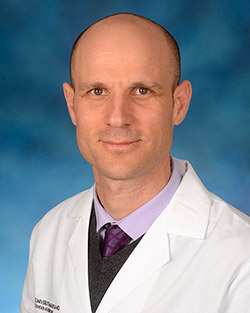 “With the threat of COVID-19, we have actually decreased the frequency at which we are seeing people here by doing as much as we can by telemedicine,” said Dr. Weintraub.
“With the threat of COVID-19, we have actually decreased the frequency at which we are seeing people here by doing as much as we can by telemedicine,” said Dr. Weintraub.
Recent efforts have centered on on enhancing recovery services to optimize social reintegration, including a Drop-In Day Center offering local resources and an opportunity to socialize. “Moving forward, we hope to integrate comprehensive vocational services, computer literacy, and GED classes with, parenting education, exercise, and nutrition class,” said Aaron Greenblatt , MD, Assistant Professor of Psychiatry and Department of Family and Community Medicine, who is the Medical Director of the HARP facility.
COVID-19 has presented additional challenges for patients of the HARP program. To help address these concerns, practitioners are maintaining regular contact with HARP patients and coordinating with counselors and social workers to meet both psychological and health needs. Patients entering the building are screened for temperature and symptoms suggestive of COVID-19, and all patients are given masks to use in the facility and keep for use elsewhere.
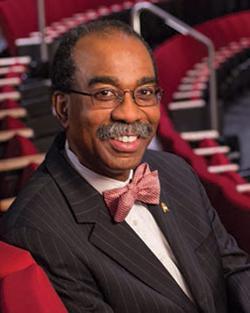 “This is truly a remarkable collaboration between our Department of Psychiatry, Department of Medicine, and our Department of Family and Community Medicine here at the University of Maryland School of Medicine, to provide comprehensive care for vulnerable patients suffering from Addiction Disorders,” said E. Albert Reece, MD, PhD, MBA, Executive Vice President for Medical Affairs, UM Baltimore, and the John Z. and Akiko K. Bowers Distinguished Professor and Dean, University of Maryland School of Medicine.
“This is truly a remarkable collaboration between our Department of Psychiatry, Department of Medicine, and our Department of Family and Community Medicine here at the University of Maryland School of Medicine, to provide comprehensive care for vulnerable patients suffering from Addiction Disorders,” said E. Albert Reece, MD, PhD, MBA, Executive Vice President for Medical Affairs, UM Baltimore, and the John Z. and Akiko K. Bowers Distinguished Professor and Dean, University of Maryland School of Medicine.
About the University of Maryland School of Medicine
Now in its third century, the University of Maryland School of Medicine was chartered in 1807 as the first public medical school in the United States. It continues today as one of the fastest growing, top-tier biomedical research enterprises in the world -- with 45 academic departments, centers, institutes, and programs; and a faculty of more than 3,000 physicians, scientists, and allied health professionals, including members of the National Academy of Medicine and the National Academy of Sciences, and a distinguished two-time winner of the Albert E. Lasker Award in Medical Research. With an operating budget of more than $1.2 billion, the School of Medicine works closely in partnership with the University of Maryland Medical Center and Medical System to provide research-intensive, academic and clinically based care for nearly 2 million patients each year. The School of Medicine has more than $540 million in extramural funding, with most of its academic departments highly ranked among all medical schools in the nation in research funding. As one of the seven professional schools that make up the University of Maryland, Baltimore campus, the School of Medicine has a total population of nearly 9,000 faculty and staff, including 2,500 student trainees, residents, and fellows. The combined School of Medicine and Medical System (“University of Maryland Medicine”) has an annual budget of nearly $6 billion and an economic impact more than $15 billion on the state and local community. The School of Medicine faculty, which ranks as the 8th highest among public medical schools in research productivity, is an innovator in translational medicine, with 600 active patents and 24 start-up companies. The School of Medicine works locally, nationally, and globally, with research and treatment facilities in 36 countries around the world. Visit medschool.umaryland.edu.
Contact
Office of Public Affairs
655 West Baltimore Street
Bressler Research Building 14-002
Baltimore, Maryland 21201-1559
Contact Media Relations
(410) 706-5260

